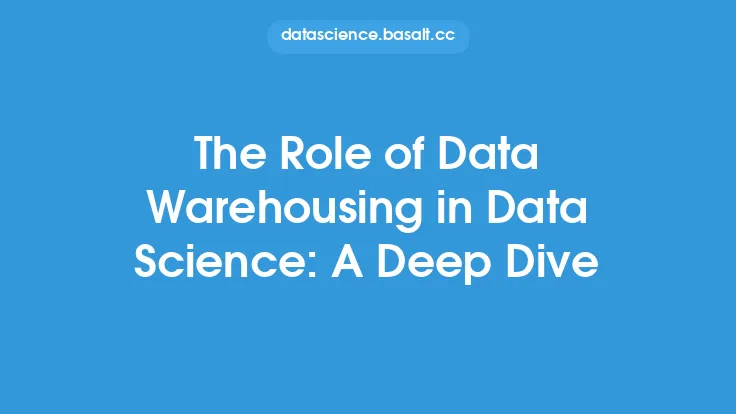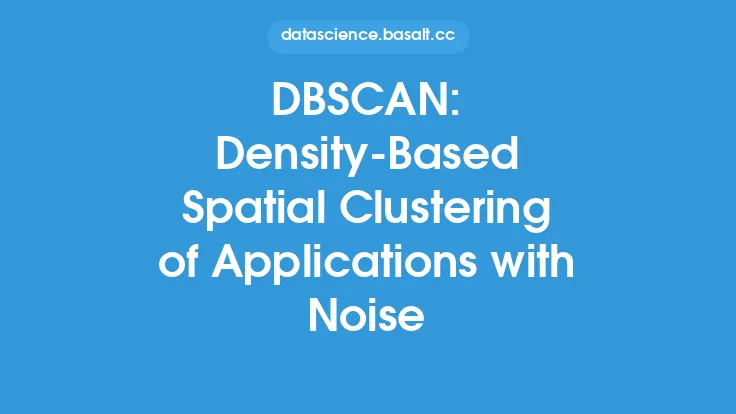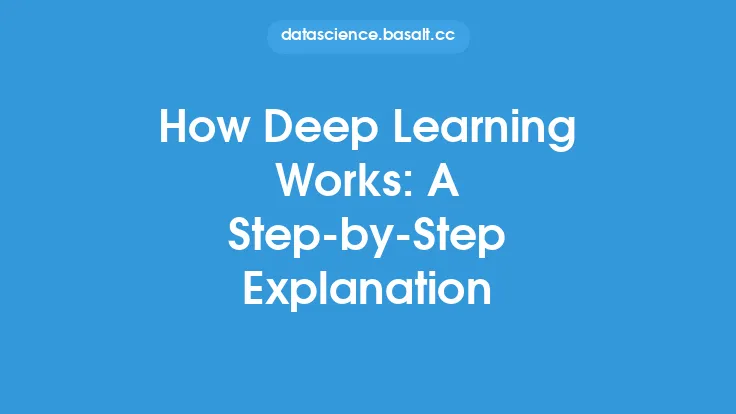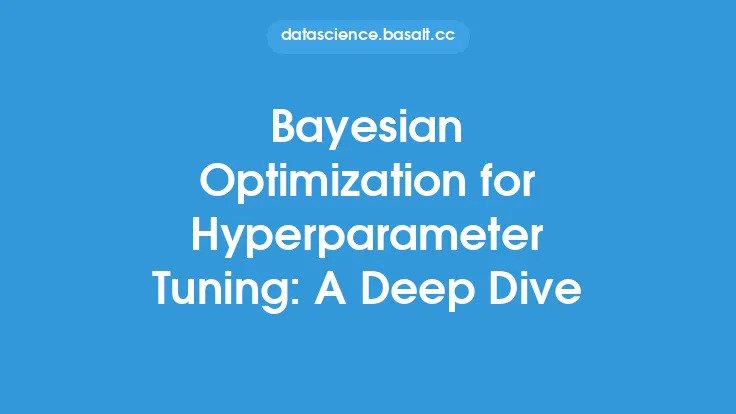K-Means clustering is a type of unsupervised learning algorithm that partitions the data into K clusters based on their similarities. The algorithm works by iteratively updating the centroids of the clusters and reassigning the data points to the closest cluster until convergence. The goal of K-Means clustering is to identify patterns or structures in the data that are not easily visible by other methods.
Introduction to K-Means Clustering
K-Means clustering is a widely used algorithm in data analysis and machine learning. It is a simple yet effective method for identifying clusters in the data. The algorithm starts by randomly initializing the centroids of the clusters, and then iteratively updates the centroids and reassigns the data points to the closest cluster. The process continues until the centroids no longer change or a stopping criterion is reached.
How K-Means Clustering Works
The K-Means clustering algorithm works as follows:
- Initialization: The algorithm starts by randomly initializing the centroids of the K clusters.
- Assignment: Each data point is assigned to the closest cluster based on the Euclidean distance between the data point and the centroid of the cluster.
- Update: The centroid of each cluster is updated by calculating the mean of all data points assigned to that cluster.
- Repeat: Steps 2 and 3 are repeated until the centroids no longer change or a stopping criterion is reached.
Types of K-Means Clustering
There are several types of K-Means clustering algorithms, including:
- Standard K-Means: This is the most common type of K-Means clustering algorithm, which uses the Euclidean distance to measure the similarity between data points.
- K-Medoids: This type of K-Means clustering algorithm uses the medoid (the most representative object) of each cluster instead of the centroid.
- K-Modes: This type of K-Means clustering algorithm is used for categorical data and uses the mode (the most frequent value) of each cluster instead of the centroid.
Choosing the Optimal Number of Clusters
One of the most important steps in K-Means clustering is choosing the optimal number of clusters (K). There are several methods to determine the optimal value of K, including:
- Elbow Method: This method involves plotting the sum of squared errors (SSE) against the number of clusters and choosing the point where the rate of decrease of SSE becomes less steep (the elbow point).
- Silhouette Method: This method involves calculating the silhouette coefficient for each data point and choosing the number of clusters that maximizes the average silhouette coefficient.
- Calinski-Harabasz Index: This method involves calculating the Calinski-Harabasz index for each number of clusters and choosing the number of clusters that maximizes the index.
Advantages and Disadvantages of K-Means Clustering
K-Means clustering has several advantages, including:
- Simple and efficient: K-Means clustering is a simple and efficient algorithm that can be used for large datasets.
- Easy to implement: K-Means clustering is easy to implement and can be used with a variety of programming languages.
- Interpretable results: The results of K-Means clustering are easy to interpret and can be used to identify patterns and structures in the data.
However, K-Means clustering also has several disadvantages, including:
- Sensitive to initial conditions: K-Means clustering is sensitive to the initial conditions and may converge to a local minimum.
- Assumes spherical clusters: K-Means clustering assumes that the clusters are spherical and may not work well with clusters of other shapes.
- Not suitable for noisy data: K-Means clustering is not suitable for noisy data and may not work well with data that contains outliers.
Real-World Applications of K-Means Clustering
K-Means clustering has several real-world applications, including:
- Customer segmentation: K-Means clustering can be used to segment customers based on their demographics, behavior, and preferences.
- Image segmentation: K-Means clustering can be used to segment images into different regions based on their color, texture, and other features.
- Gene expression analysis: K-Means clustering can be used to analyze gene expression data and identify patterns and structures in the data.
Common Challenges and Solutions
K-Means clustering can be challenging to implement and interpret, especially for large and complex datasets. Some common challenges and solutions include:
- Handling high-dimensional data: K-Means clustering can be challenging to implement for high-dimensional data. One solution is to use dimensionality reduction techniques such as PCA or t-SNE to reduce the number of features.
- Handling noisy data: K-Means clustering can be challenging to implement for noisy data. One solution is to use robust clustering algorithms such as K-Medoids or DBSCAN that are more resistant to noise and outliers.
- Choosing the optimal number of clusters: Choosing the optimal number of clusters can be challenging. One solution is to use methods such as the elbow method, silhouette method, or Calinski-Harabasz index to determine the optimal number of clusters.
Conclusion
K-Means clustering is a widely used algorithm in data analysis and machine learning. It is a simple yet effective method for identifying patterns and structures in the data. However, K-Means clustering can be challenging to implement and interpret, especially for large and complex datasets. By understanding the advantages and disadvantages of K-Means clustering, as well as the common challenges and solutions, data analysts and machine learning practitioners can use K-Means clustering to gain insights and make informed decisions.





